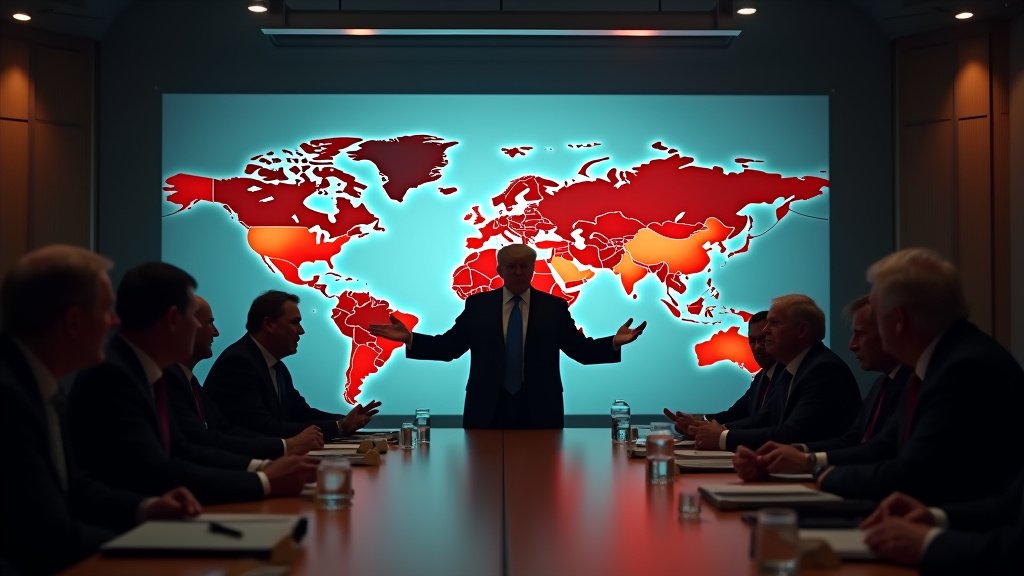Washington, D.C. – The United States Supreme Court on Tuesday, July 8, 2025, cleared a significant legal obstacle for the Trump administration’s plans to implement widespread changes across the federal government, including potential mass layoffs and the restructuring or elimination of entire agencies.
In an unsigned order issued via its “shadow docket,” the court lifted lower court injunctions that had temporarily blocked the administration’s efforts to reduce the federal workforce and reorganize governmental bodies without specific authorization from Congress.
Background to the Challenge
This high-stakes legal battle stemmed from executive actions aimed at dramatically downsizing the federal government. The administration’s initiatives, led in part by the Department of Government Efficiency, had already begun to impact the workforce, with tens of thousands of federal workers reportedly fired, placed on leave, or departing through deferred resignation programs prior to the legal challenges taking hold.
The lawsuit challenging these actions was brought by a broad coalition, including unions, non-profits, and local governments. Prominent among the plaintiffs were several major American cities, including Baltimore, Chicago, and San Francisco. These groups argued that the proposed cuts could lead to devastating staffing reductions, potentially reaching 40 to 50 percent at several critical agencies, which they contended would severely impair essential public services.
Lower courts had previously sided with the plaintiffs. Senior U.S. District Judge Susan Illston in San Francisco initially granted a temporary restraining order and subsequently a preliminary injunction against the executive order driving these changes. That ruling was later upheld by the 9th Circuit Court of Appeals, providing a temporary halt to the administration’s restructuring plans.
The Supreme Court’s Decision
The Supreme Court’s order reverses the protective measures put in place by the lower courts. By lifting the injunctions through its “shadow docket” – a term referring to rulings made outside the court’s regular, fully briefed and argued cases – the justices have effectively allowed the administration to proceed with its plans while the underlying legal challenges potentially continue through the courts.
The unsigned nature of the order provides little insight into the majority’s reasoning, a characteristic common to “shadow docket” rulings, which are often used for emergency requests or procedural matters but have become increasingly controversial for addressing substantive policy issues.
Reactions and Implications
The decision drew immediate and sharp criticism from dissenting justices and affected worker groups.
Justice Ketanji Brown Jackson, in a dissenting opinion, characterized the court’s action in lifting the injunctions as “unfortunate, hubristic and senseless.” Her comments underscore the deep divisions within the court regarding the appropriateness and impact of the ruling.
The American Federation of Government Employees (AFGE), one of the nation’s largest federal employee unions representing approximately 820,000 federal workers, voiced grave concerns. In a public statement, the union asserted that the court’s decision “has dealt a serious blow to our democracy and puts services that the American people rely on in grave jeopardy.” This reaction highlights fears about the potential disruption to government functions ranging from national security and public health to environmental protection and social services.
The ruling’s practical effect is to remove the legal barrier that prevented the administration from moving forward with its workforce reduction and agency consolidation initiatives. While the original lawsuit may still proceed on its merits, the immediate injunctions that protected federal jobs and agency structures are no longer in force. This clears a path for the Trump administration to potentially implement significant, rapid changes across the federal landscape, fulfilling stated goals of streamlining government operations and reducing personnel costs.
The future scale and speed of these changes will depend on subsequent administrative actions and any further legal challenges or legislative responses. However, the Supreme Court’s July 8th order marks a pivotal moment, significantly altering the legal landscape and enabling the potential for extensive transformation within the federal government’s structure and workforce.











